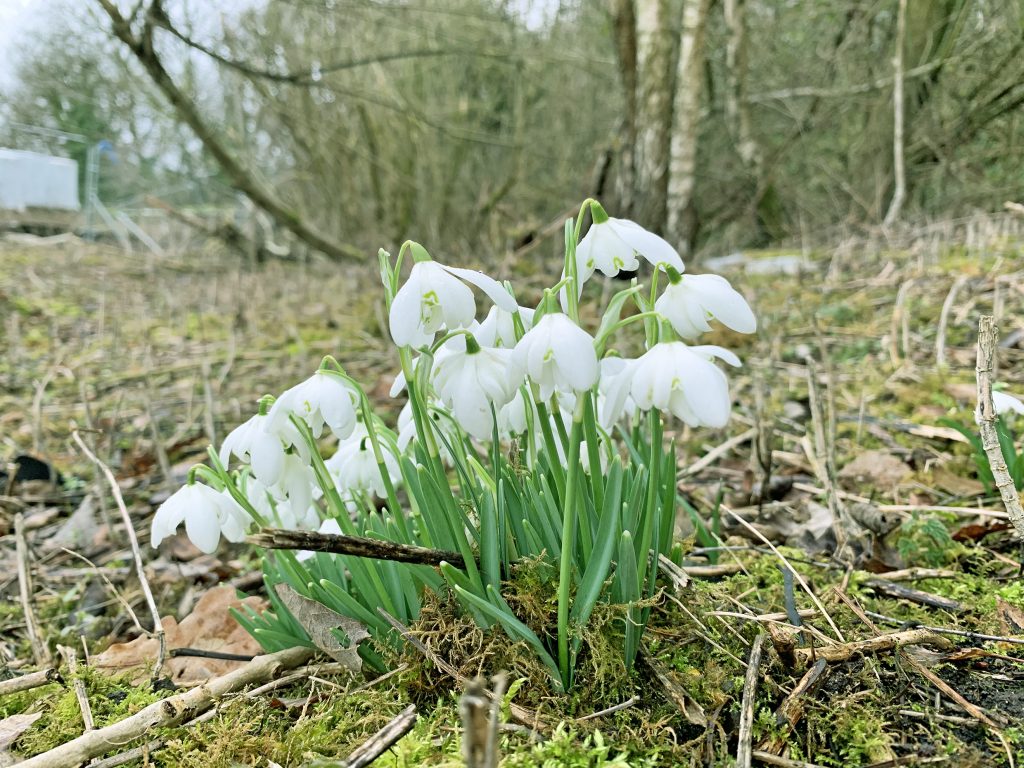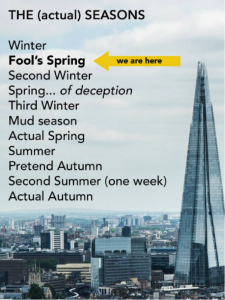A man for all seasons
Friday 1st March 2019

Celebrate the first day of spring as our man for all seasons and Outdoor Learning and Ecology Manager, Dr Roger Baker reports on the recent unseasonably warm weather spell and takes a look at Stansfeld Park, the site of our new Science Oxford Centre, as nature gears up for spring.

With all the amazing weather we’ve had in February, it would not be unreasonable to think that spring has well and truly sprung. The 20.8⁰C recorded on the 26th February went down as the warmest February day on record and is significantly higher than the average of between 7⁰C and 9⁰C at this time of year. We are seeing birds furiously building their nests, shoots emerging and flowers opening in the woodlands at Stansfeld Park.
Which got me thinking, what is it that defines the seasons and why?
Of course, a simple question sometimes has a complex answer and it really does depend on which definition of ‘season’ you wish to use. Astronomical seasons begin and end on the equinoxes or solstices – specific dates and times that vary each year. This year, for example, the March equinox marking the start of spring falls at 21:58 GMT on the 20th March. This is the precise time when the sun falls directly on the equator, meaning the night and day lengths are exactly the same duration. Spring ends, and summer begins on the summer solstice at 15:54 on the 21st June.

Meterological seasons are periods based on the typical temperature with summer being the hottest quarter, winter being the coldest. The quarters begin on the first day of the month in which the astronomical equinox occurs. So meteorologically, spring begins on 1st March and runs until June 1st.
Confused? Well, it can get more tricky as there some definitions that use equinoxes and solstices as seasonal mid-points, including the traditional Celtic and Chinese calendars. Shakespeare’s midsummer is on the summer solstice – midway through summer. Meanwhile, some Asian calendars (such as the Bengali, Tamil and Hindu calendars) have six seasons as they include a monsoon season and a prevernal or late autumnal season to the usual four.

Of course, the astronomical and meteorological definitions are simply lines drawn in the same scientific sand. It is the 23.5⁰ tilt of Earth’s axis that drives the varying temperatures and day lengths on which these seasons are determined in temperate and subpolar regions. Not so in tropical areas, where the day length remains the same all year round. Here, they tend to have only the (predominantly) dry seasons and the wet/rainy seasons. Meanwhile, in the extreme Polar Regions, the summer season is when the sun does not set, and the winter season is when it does not rise.
But what is the purpose of defining these seasons? In times gone by, it was useful for farmers to know the best time to plant crops, to carry out the harvest, to hunt a migratory species or prepare for floods. While still relevant for many, more recently seasons might simply be used to determine the best time to go on holiday or plan a change of wardrobe. For many adaptable modern human beings, capable of living anywhere on our planet through our use of technology, the consequences of getting it wrong has become a mere annoyance.

So does the recent balmy weather mean its spring, an ominous sign of climate change or a momentary hiccup before more typical cold temperatures return?
The forecasts would suggest that it’s just a blip before the temperatures dip again and just how nature will cope we will have to wait and see. Meanwhile, why not pull on another layer, turn the heating back on and wait it out. Spring is definitely on the way…




